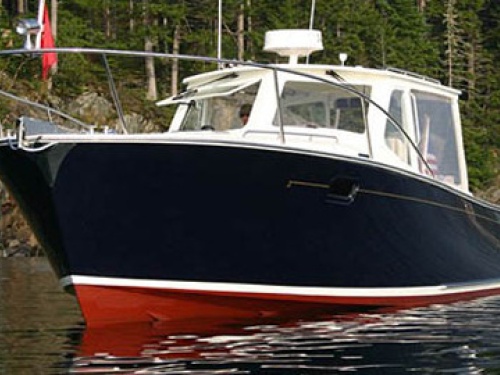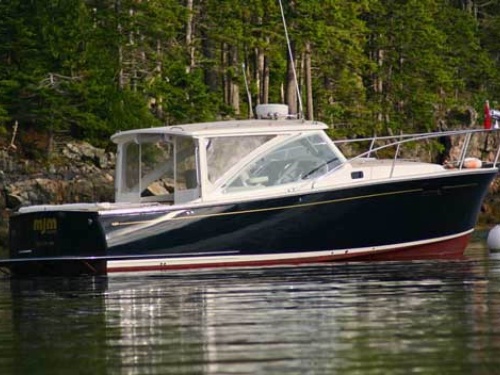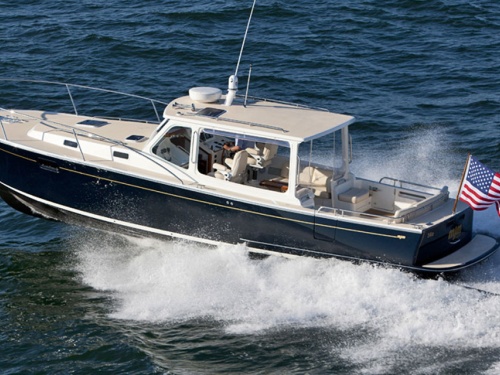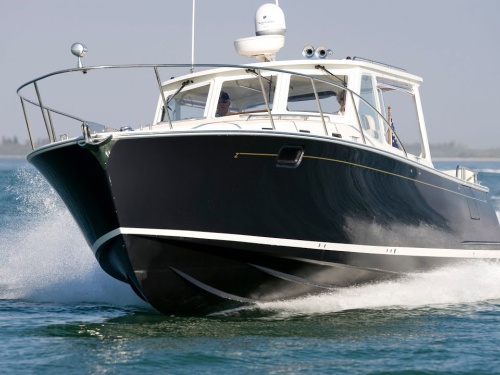Access More Boat Tests
Already have an account? Login
By submitting this form, you acknowledge that you have read and agree with the Privacy Policy & Terms of Use of BoatTEST.com.
MJM 35z (2018-)
2 x 350-hp Mercury Verado
Price
See the price by becoming
a BoatTEST member.
Members Must Log In
Brief Summary
The MJM 35z is a Downeast-style outboard-powered express cruiser, an early entry into a now-burgeoning category. MJM has long produced extremely well-built powerboats with an eye toward using the latest technology to advantage, while providing a comfortable experience in a variety of conditions. The 35z is no exception, dialing in the outboard propulsion system to optimize performance and ease of operation. The boat has accommodations suited to a cruising couple and a versatile, single-level main-deck layout that lets everyone on board spend time together and feel closer to the water.



